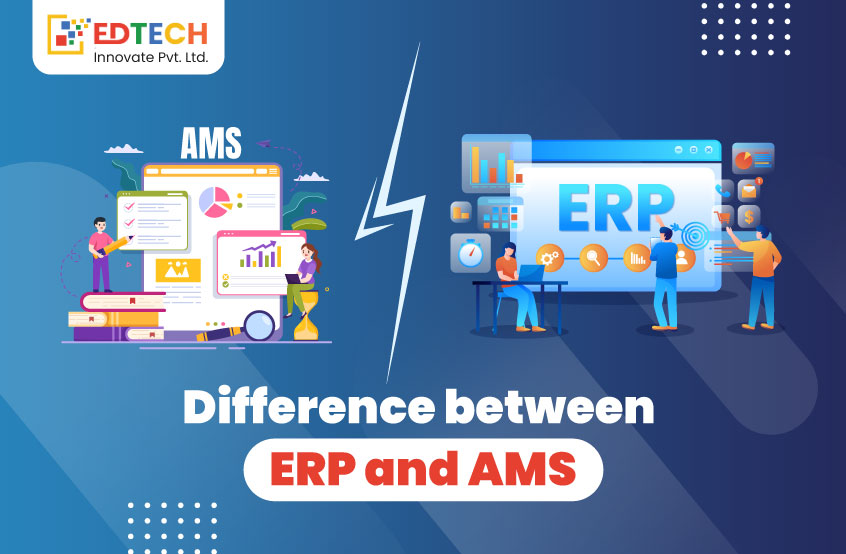Discover the best on...

In this blog, we will understand Enterprise Resource Planning (ERP) and Admission Management System (AMS) software and highlight the key differences between these two software tools.
An automated admission management system is a software program that helps to enhance an institution's online admissions process to be more effective. The admission management system software's features involve providing students access to a secure online application portal, monitoring and responding to candidate inquiries, and organizing and managing the application and document submission process. AMS software integrates various social media platforms to enhance communication among users and improve the connection between users and institutions. AMS also helps institutions collect payments by offering a payment management system that collects students' fees and generates payment statements. Through admission management system, institutions can track admission status, and respond to all students' queries to ensure they experience a seamless admissions process.
Enterprise Resource Planning, or ERP, is the process of organizing, monitoring, communicating, and simplifying the academic structure of an institution. An automated Enterprise Resource Planning software tool helps educational institutions by integrating and digitizing their various administrative functions by providing a digital platform for educational institutions. It is a single, centralized platform that includes managing staff and students, scheduling exams, fee accounting, and other related activities and operations to save time, and cost, and ensure efficient resource utilization. With an online ERP portal, the communication between users is enhanced which improves the connection between students and educators for a better educational experience. Overall, ERP software enables institutions to operate more cost-effectively and strategically which helps in boosting the productivity and growth of the institution.
Also Read- Top 10 Reasons to Use Online Examination Systems for Institutes & Universities
Choosing between AMS and ERP software is dependent on various factors such as the needs and requirements of your organization, scope of work, scalability, and customization, among others. Some factors need to be considered when choosing the right software for your institution. These factors are listed below.
The choice between Admission Management System (AMS) and Enterprise Resource Planning (ERP) software hinges on several factors such as scope, budget, integration capabilities, customization, and scalability. AMS is developed to handle the admission processes for institutions and is ideal for smaller-scale institutions. Whereas ERP offers a comprehensive solution for organizations by integrating various departments and functions within an organization.
ERP systems are designed to unify and streamline business processes across an organization, while AMS focuses on the ongoing support and optimization of specific applications. Both are crucial for different aspects of IT management and business operations.
ERP: Typically used by executives, department heads, operational staff, and IT professionals to manage and integrate various business processes across an organization.
AMS: Typically used by IT support teams, application managers, developers, business analysts, and end users to support, maintain, and optimize specific software applications.
Yes, Application Management Services (AMS) can indeed be used for managing ERP (Enterprise Resource Planning) systems. AMS provides a range of services that are crucial for maintaining, supporting, and optimizing ERP systems, ensuring they function effectively and meet organizational needs.
© Copyright 2025 All Rights reserved by Edtech Innovate Pvt Ltd